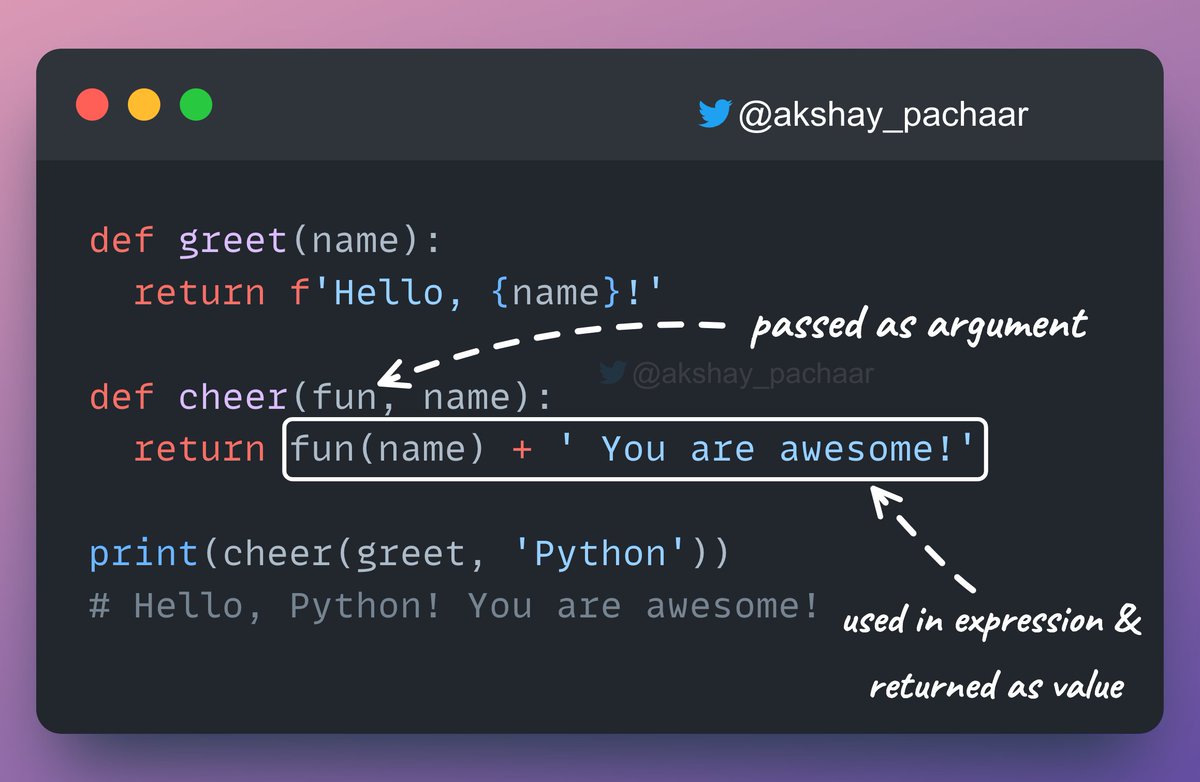Broadcasting in NumPy is widely used, yet poorly understood❗️
Today, I'll clearly explain how broadcasting works!
Same rules apply to PyTorch & TensorFlow!
Let's go! 🚀
Today, I'll clearly explain how broadcasting works!
Same rules apply to PyTorch & TensorFlow!
Let's go! 🚀

Broadcasting describes how NumPy treats arrays with different shapes during arithmetic operations.
The smaller array is “broadcast” across the larger array, such that the 2 have compatible shapes.
Check this out👇
The smaller array is “broadcast” across the larger array, such that the 2 have compatible shapes.
Check this out👇

In the image below, scalar "b" is being stretched into an array with the same shape as "a".
But how do we generalise these things?
continue reading ... 📖
But how do we generalise these things?
continue reading ... 📖

💫 General Rules:
1) Broadcasting starts with the trailing (i.e. rightmost) dimensions and works its way left .
2) Two dimensions are compatible, either when they are equal or one of them is 1.
Check out the examples 👇
1) Broadcasting starts with the trailing (i.e. rightmost) dimensions and works its way left .
2) Two dimensions are compatible, either when they are equal or one of them is 1.
Check out the examples 👇

When ever a one dimensional array is involved in broadcasting, consider it as a row vector!
Array → [1, 2, 3] ; shape → (3,)
Treated as → [[1, 2, 3]] ; shape → (1, 3)
Remember, broadcasting occurs from trailing dimension!
Check this out👇


Array → [1, 2, 3] ; shape → (3,)
Treated as → [[1, 2, 3]] ; shape → (1, 3)
Remember, broadcasting occurs from trailing dimension!
Check this out👇


Let's check a scenario when broadcasting doesn't occur!
- a(4x3)
- b(4) will be treated as b(1x4)
Now, broadcasting starts from trailing dimension but (4x3) & (1x4) are not compatible!
Check this out👇
- a(4x3)
- b(4) will be treated as b(1x4)
Now, broadcasting starts from trailing dimension but (4x3) & (1x4) are not compatible!
Check this out👇

Let's take one more example to make out understanding concrete!
Remember, 1D array treated as a row vector while broadcasting!
Check this out👇
Remember, 1D array treated as a row vector while broadcasting!
Check this out👇

Why use broadcasting❓
Broadcasting provides a means of vectorising array operations so that looping occurs in C instead of Python.
It does this without making needless copies of data and usually leads to efficient algorithm implementations.
Broadcasting provides a means of vectorising array operations so that looping occurs in C instead of Python.
It does this without making needless copies of data and usually leads to efficient algorithm implementations.
That's a wrap!
If you Enjoyed reading this & are interested in
- Python 🐍
- ML/MLOps 🛠
- CV/NLP 🗣
- LLMs 🧠
- AI Engineering ⚙️
Find me → @akshay_pachaar ✔️
Everyday, I share tutorials on the above topics!
Cheers! 🥂
If you Enjoyed reading this & are interested in
- Python 🐍
- ML/MLOps 🛠
- CV/NLP 🗣
- LLMs 🧠
- AI Engineering ⚙️
Find me → @akshay_pachaar ✔️
Everyday, I share tutorials on the above topics!
Cheers! 🥂
• • •
Missing some Tweet in this thread? You can try to
force a refresh

 Read on Twitter
Read on Twitter














